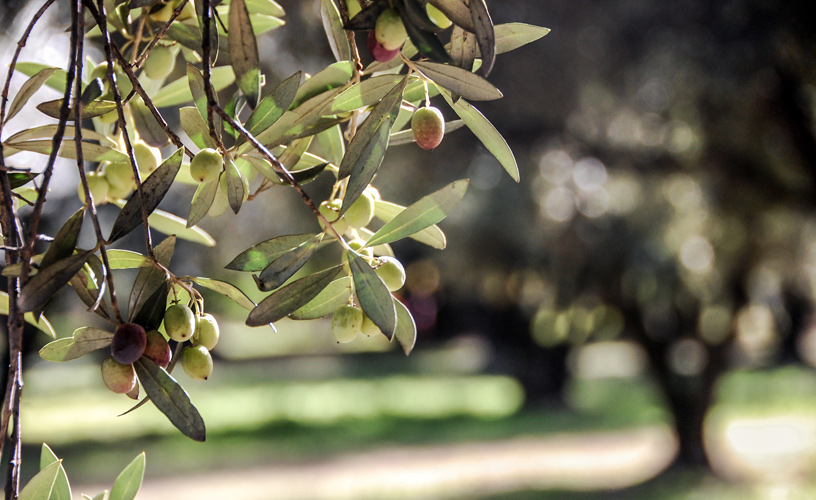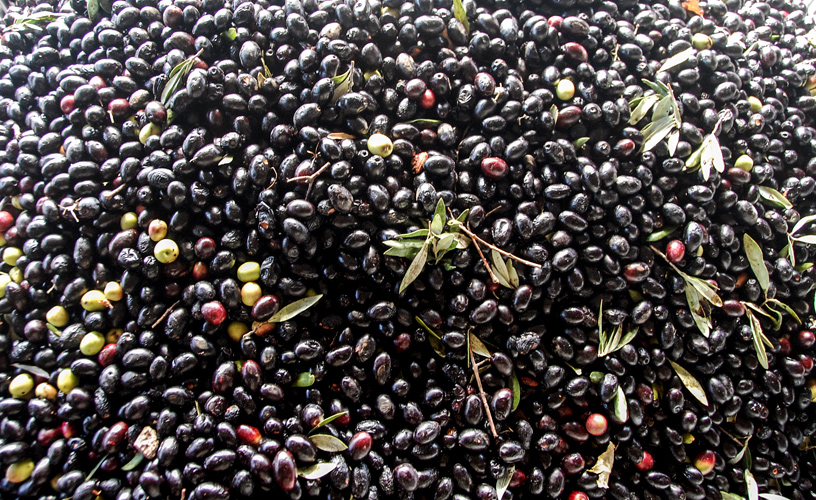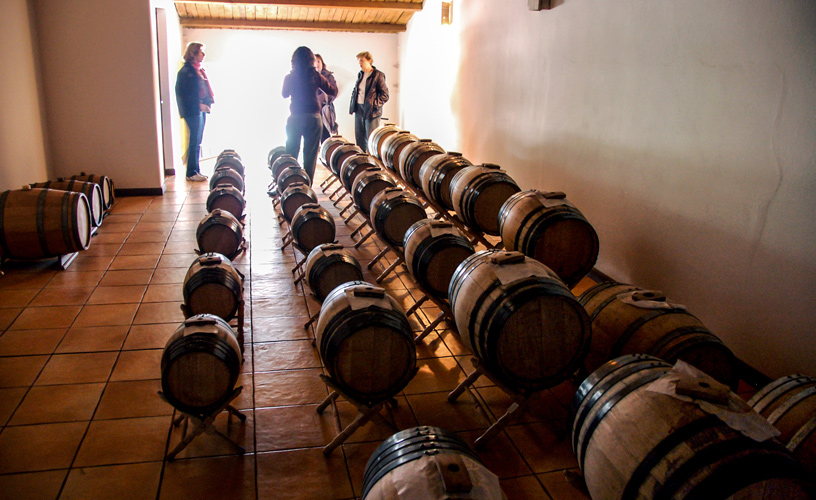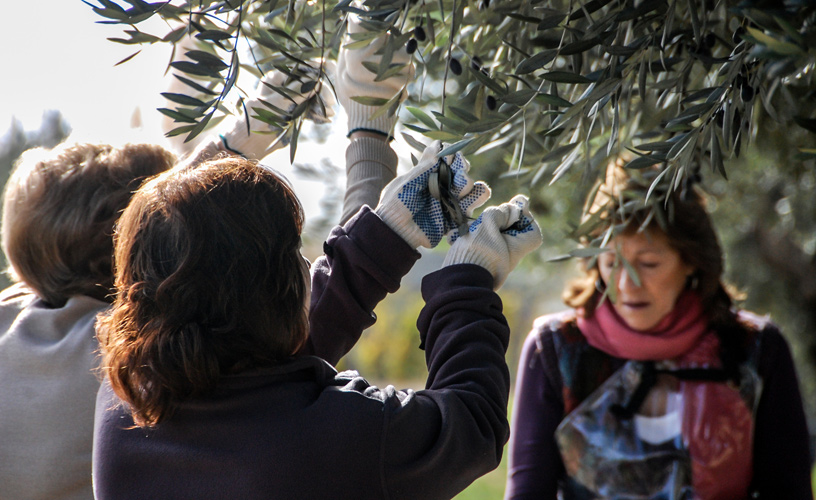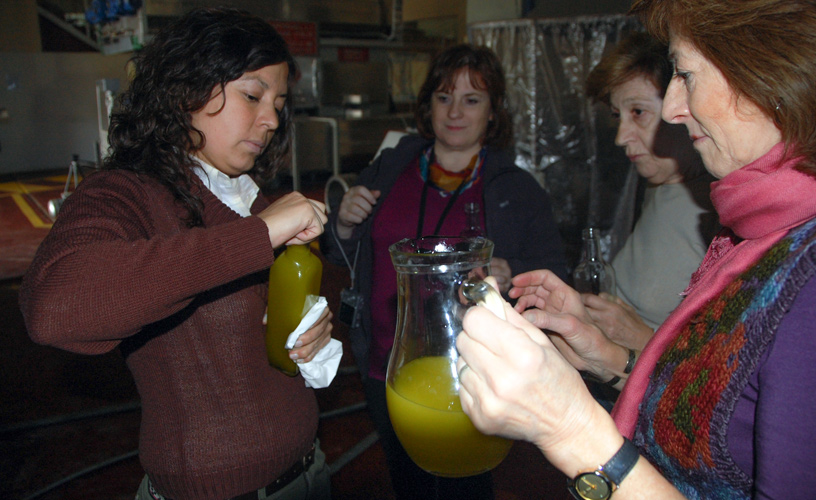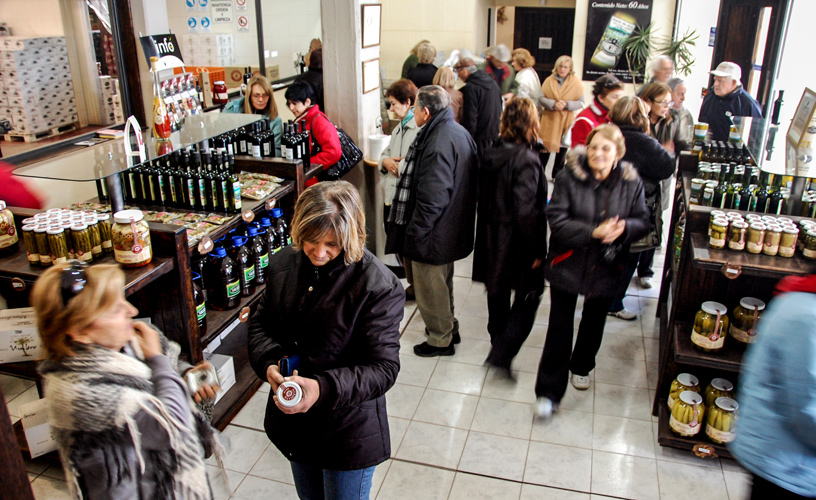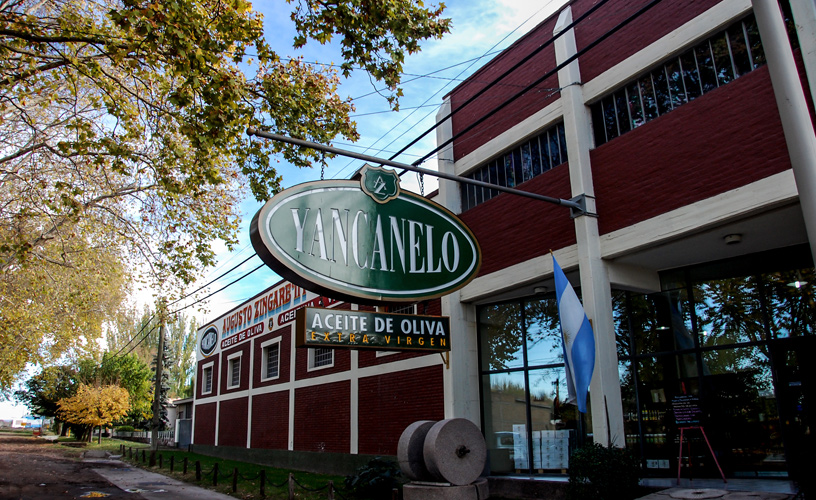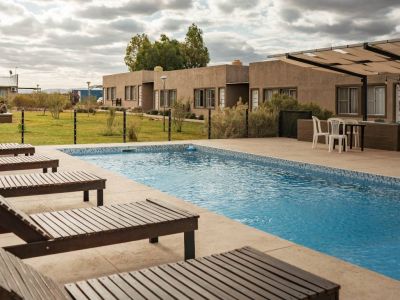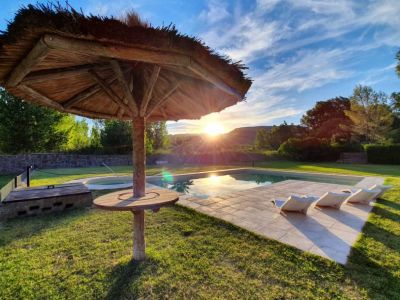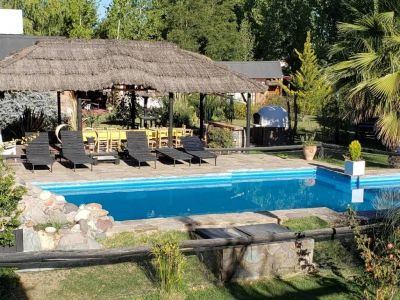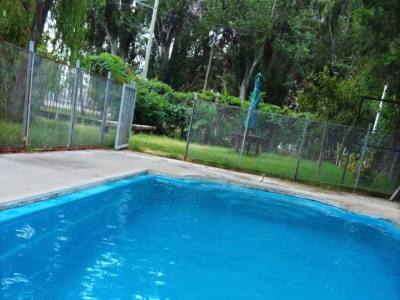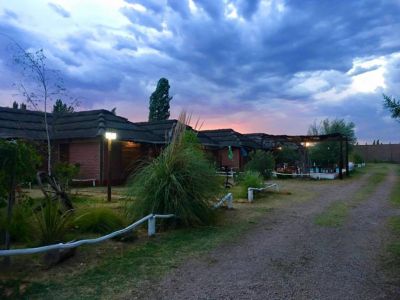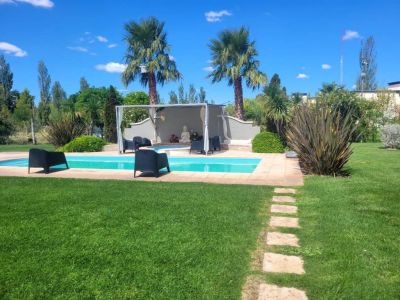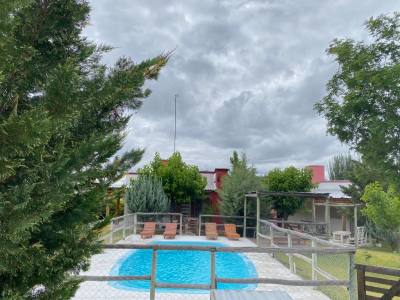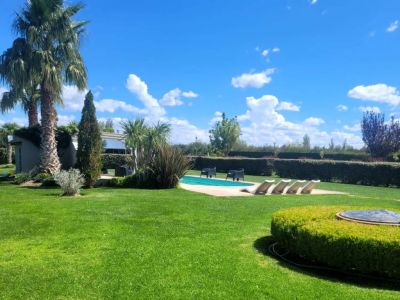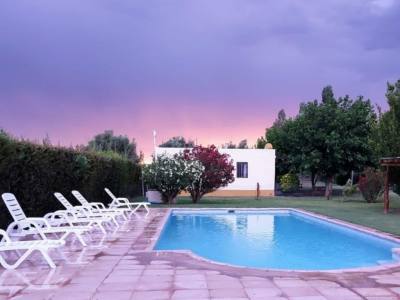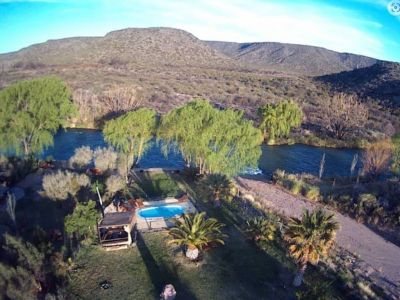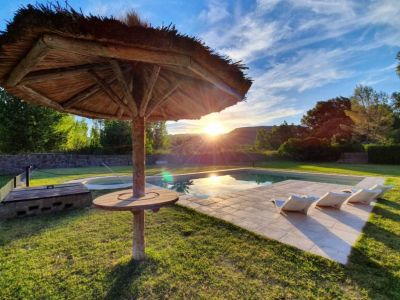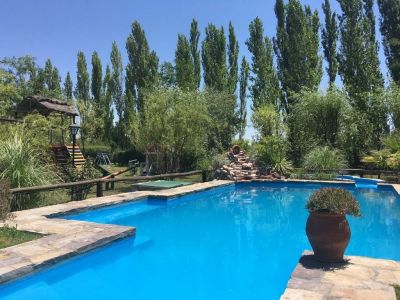Generous soils, hard working procedures and the support of a highly-qualified professional team result in fine export olive oil.
An apron, gloves and a small box were the elements that made us feel as harvesters for one day. In Mendoza, and more specifically in the City of San Rafael, we had the chance to become immersed in that aromatic almost handcrafted world in which olives turn into olive oil.
The use of olive oil is even referred to in the Bible. It has been incorporated to the Argentinian diet quite recently and in the last few years it has experienced a significant change.
Our guide, Daniela, led us through the olive oil factory and the various production stages. She contributed with extremely interesting information about this venue.
The Zingaretti family was made up by Italian immigrants who settled down in the area of Maipú (Mendoza). Their experience encouraged them to experiment with vineyards, olive tree plantations and even a gristmill.
Yancanelo Factory was established in 1942 in the site where the museum stands today. The machinery and tools we saw there were the original elements used to extract extra virgin olive oil.
See It to Believe It
Fifty years ago, the olives were ground with two animal powered stone wheels. This is how the paste used to be obtained and then moved onto layers of cloth used for the pressing stage.
The oil was obtained when the decanter tanks overflew. The vegetable water and the solid matter were left apart. The oil used to be kept in clay vessels to prevent it from being affected by any external agent.
Even though the process experienced significant changes and production times have been shortened, there is something that still remains intact: olive oil production continues to be natural and no additives are used.
The olives are harvested by hand late in Aprilearly in May and this stage lasts for two months. The contribution of independent producers is added to the products from the ancient family olive tree plantations.
Walking around the estate, we could observe some ancient, woody specimens with open canopies to receive as much sunshine and air as necessary. The olive is a very noble tree that reaches its maturity at the age of 15 but it does not age. It is extremely generous.
Green
Daniela answered about the cultivars of olive. “Arauco and manzanilla are used for regular consumption: large, fleshy with less oil. Frantoio and empeltre are smaller in size but feature a higher performance as far as natural oils are concerned”. Then she added: “The former are harvested by hand. They are hard and bitter and they must be hydrated with brine and citric acid. The black olives have remained longer in the plant; therefore, they are riper and do not need hydration”.
“Oil factories, instead, comb the branches and the olives fall on a cloth previously spread underneath so that they do not touch the ground. They are picked up in a basket, when the color of the fruit gives evidence of the best timing of its components”.
Yancanelo carries out a coupage by mixing olives of different cultivars to make oil. The trend is to make mono varietal oil, but this procedure is still under observation.
How delightful it was to enter the processing plant with our basket full of olives! We observed how the grinding process began as a machine blew the leaves away and another one washed the fruit.
Intense Sound
We lost track of the olives we had picked up, as the mixer swallowed our harvest. The product became homogeneous after passing through two centrifugal machines –both horizontally and vertically. Thus, the pure oil was separated from the vegetable water.
Daniela showed us other modern machinery which for the last few years has been carrying out the process more slowly to keep the natural antioxidants and polyphenols of the oil intact. The product obtained is divided and bottled as premium.
We also learned that the nut is not disposed. The leaves are used as manure and the solid matter feeds the machines as excellent fuel.
We could see the olive oil appear from a pipe. We bottled our own product in a glass flask and the rest continued its course towards the large stainless-steel tanks, where it was supposed to rest. Afterwards, it will be bottled and commercialized.
The typical smell of the olives was present during our entire tour around the factory: a pleasure for our noses.
Corporate Pride
Daniela added that in 2001, the Andreani Family joined this company to reactivate the Umbro red wine winery and the olive oil factory. Furthermore, the production of premium balsamic vinegar Doménico Ranieri was incorporated, respecting the Italian method.
Yancanelo was awarded with the Golden Olive in the Cuyoliva 2007 Contest and it exports 75% of its production. Connoisseurs can visit the basement, where the experts give lectures on the topic.
As we said good-bye to Daniela, we already felt as if we had been part of the process of extra virgin olive oil extraction. We certainly were not skilled enough as to be hired by the company, but the experience was totally worthwhile and gave us a warm welcome into the Olive Route.
Mónica Pons
Eduardo Epifanio
Phone: +54 260-4423879
Cell phone: +54 260-4022907
